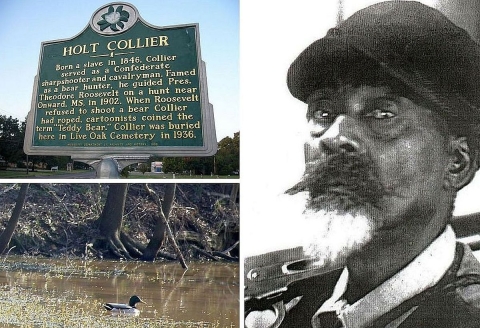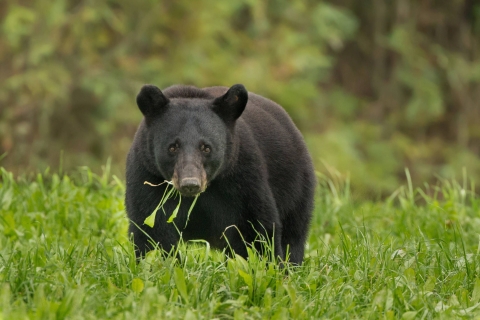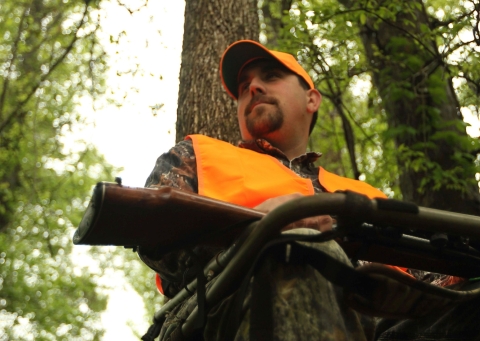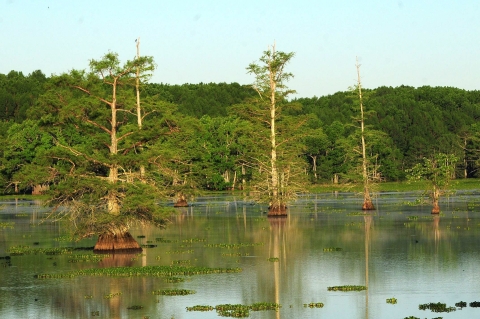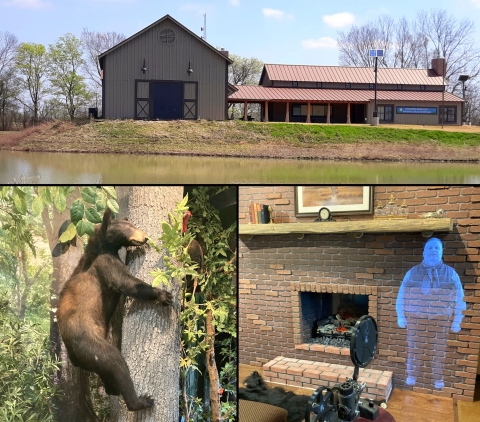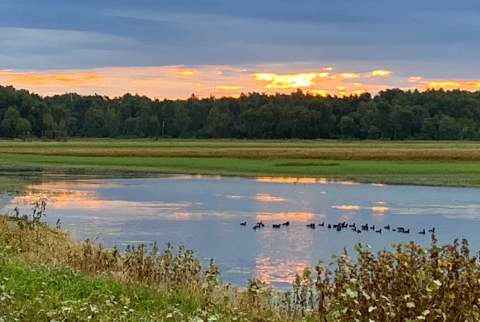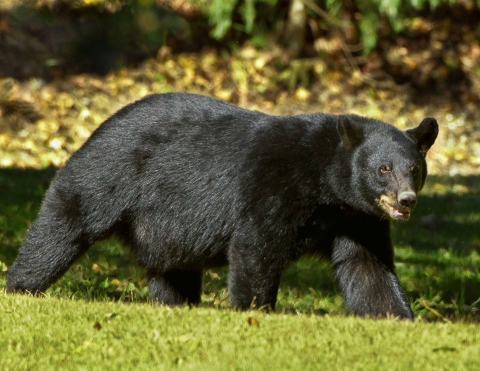The story that led to the creation of the teddy bear toy unfolded more than a century ago when President Theodore Roosevelt visited west-central Mississippi and northeastern Louisiana.
This article tells that story and celebrates the conservation impact Roosevelt had on that part of the nation.
Theodore Roosevelt National Wildlife Refuge Complex (located in Mississippi and Louisiana) and Tensas River National Wildlife Refuge (in Louisiana) are steeped in history and folklore.
They conserve wildlife, and they honor the legacy of Roosevelt, the 26th president of the United States and the founder of the National Wildlife Refuge System.
These refuges in Mississippi and Louisiana also honor Holt Collier, a widely admired African American outdoorsman of the 19th century. Collier was born into slavery, fought for the South in the Civil War and, after gaining his freedom, became a hunter/guide extraordinaire. Reports of his day credit him with more bear kills than those claimed by Davy Crockett and Daniel Boone. Roosevelt is said to have considered Collier the best hunter he’d ever seen.
The refuges also celebrate the animal that inspired the teddy bear. In November 1902, Collier guided President Roosevelt on a hunting trip in Mississippi. As the story goes, when Collier cornered and stunned a Louisiana black bear for the president’s benefit, Roosevelt refused to shoot the bear. After the incident was publicized nationally in an editorial cartoon, a New York store owner created a stuffed toy he called “Teddy’s bear.”
The refuges preserve the rich hunting heritage of the Deep South, too. In October 1907, Collier guided President Roosevelt on a second bear hunt, this one in northeastern Louisiana near the Tensas River. Today, hunting is still a popular tradition. Tensas River National Wildlife Refuge alone attracts approximately 75,000 hunters annually, providing a great boost to the local economy.
Theodore Roosevelt National Wildlife Refuge Complex comprises nine refuges, including the only refuge named for a president, the only refuge named for an African American, and Mississippi’s oldest national wildlife refuge national wildlife refuge
A national wildlife refuge is typically a contiguous area of land and water managed by the U.S. Fish and Wildlife Service for the conservation and, where appropriate, restoration of fish, wildlife and plant resources and their habitats for the benefit of present and future generations of Americans.
Learn more about national wildlife refuge . The largest of the nine refuges are Panther Swamp, Saint Catherine Creek and Hillside National Wildlife Refuges. The oldest, Yazoo National Wildlife Refuge, was established in 1936 and is home to a healthy population of American alligators.
Four other refuges in the complex are Holt Collier, Mathews Brake, Morgan Brake and Bayou Cocodrie National Wildlife Refuges. “Each provides its own unique beauty and sense of wonder to the visitor. I have seen thousands of snow geese fly overhead at Morgan Brake National Wildlife Refuge, a 16-foot alligator at Yazoo National Wildlife Refuge, and a plethora of waterfowl and wading birds at Saint Catherine Creek National Wildlife Refuge,” says Brett Moule, project leader at Theodore Roosevelt National Wildlife Refuge Complex. Mathews Brake Refuge, which provides habitat for more than 30,000 ducks each winter, is known for duck hunting. A brake, by the way, is a natural wooded wetland area or thicket.
The ninth refuge, Theodore Roosevelt National Wildlife Refuge, is near U.S. Highway 61. Its lands and waters are currently closed to the public, however its new visitor center “serves as a way for visitors to step back in time as they listen to a talk from President Roosevelt or interact with many of the exhibits throughout,” says Moule. The visitor center, still in the final phases of development, will be a showcase not only for national wildlife refuges but for all federal lands in the Mississippi Delta region, which stretches north from near Vicksburg to the Tennessee border.
“The visitor center is distinctive in that its exhibits enable the visitor to experience the history of the Mississippi Delta along with being among many flora and fauna species found in this region” says Moule. Because Roosevelt would go on to found the National Wildlife Refuge System in 1903 – an era when America was just beginning to focus on protecting wildlife – exhibits honor Roosevelt on a grand scale. All told, Roosevelt established more than 50 national wildlife refuges.
The exhibits also provide a virtual tour of the refuges and other nearby federal lands; stress the importance of the refuges to migratory birds along the Mississippi Flyway; honor Collier’s remarkable life; and recognize 8,000 years of Native American heritage in the area. The visitor center is along U.S. Highway 61 just south of Rolling Fork, Mississippi. Rolling Fork celebrates the legend of the teddy bear annually in October at the Great Delta Bear Affair.
The exhibits also feature the Louisiana black bear, which once roamed plentifully across Mississippi, Louisiana and east Texas. By 1992, there were as few as 150 Louisiana black bears in the wild due to loss of their bottomland hardwood forest habitat and human-related mortality. That year, the bear was listed as a threatened species under the Endangered Species Act. Since then, the Louisiana Department of Wildlife and Fisheries, the U.S. Fish and Wildlife Service’s Louisiana Ecological Services office, the U.S. Department of Agriculture, the Black Bear Conservation Coalition and private landowners have helped the bear recover. Those partners have restored bottomland hardwood forest habitat the bears need to survive. To establish new bear populations or increase the genetic diversity of existing small populations, state and federal wildlife biologists also have relocated bears from Tensas River National Wildlife Refuge, where they thrive, to Bayou Cocodrie, Bayou Teche and Lake Ophelia National Wildlife Refuges, the state of Louisiana’s Three Rivers Wildlife Management Area and elsewhere.
That cooperation has paid off.
In 2016, the Louisiana black bear was removed from the threatened and endangered species list. Today, an estimated 750 bears live across the species’ current range, and successful recovery efforts are enabling breeding populations to expand. Consequently, the bear, which is the state mammal of Louisiana, is not likely to become in danger of extinction in the foreseeable future.


